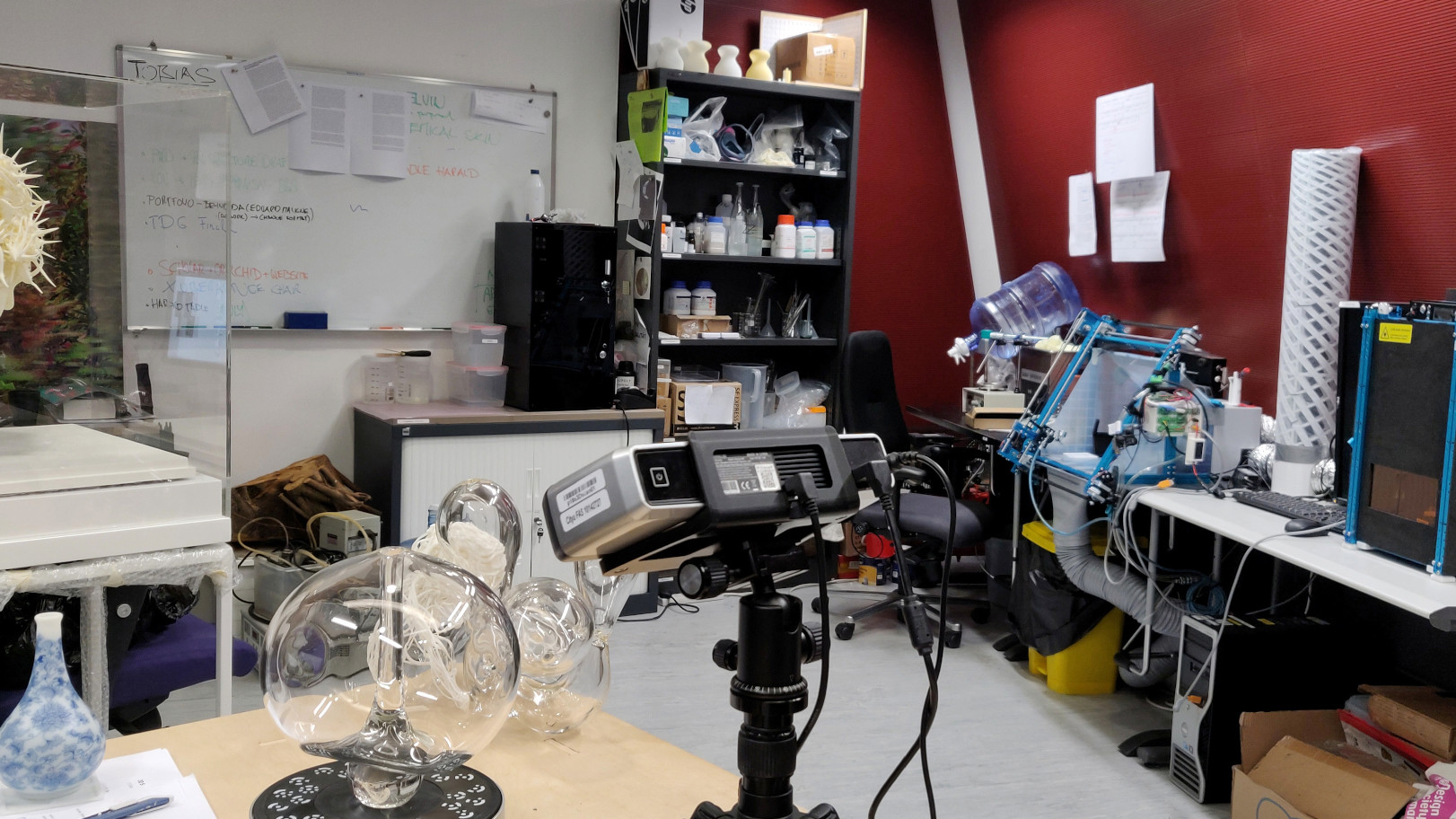This research fellowship explores the notion of Digital Craftsmanship as an inter-, trans- and multidisciplinary platform and emerging field in Creative Media.
It aims to forge a synthesis between today’s digital tools in Computer Aided Design and Manufacturing, which are often uncritically used, and the the in-depth cultural, technical, historical understanding of craft practice in its mulitiplicity of contexts. Understanding and integrating craft as a mechanism, already described by Richard Sennett in The Craftsman, entails more than simiply looking back at traditional making, it invovles unlocking the potential of collaborative research work that is:
Interdisciplinary - through working with local practitioners of traditional craft and their material and tooling understanding,
Transdisciplinary - through collaborations with partners from Science and Engineering, integrating new methods and material strategies in design processes
Multidisciplinary - through working with Museums and Archives to transform cultural knowledge and heritage into an active holistic design process.
We are working in the following areas to establish the notion of a Digital Craftsmanship as a practice situated between traditional ways of making and digital fabrication
Skills
We investigate and identify key artefacts of the collection of the University Museum and Art Gallery (UMAG) to 3D scan, translate and digitally fabricate. The selection of objects is based upon formal quality and geometrical complexity, the level and type of craftsmanship, and the diversity between them in order to allow comparative 2D/3D additive and subtractive manufacturing of them and potential hybridization between their shapes and methods of making. Additionally, we are working with traditional craft practitioners from Hong Kong to identify and document current methods of different crafts in the context of their translation to new methods and materials.
Materials
We are working with smart materials to develop new material compositions based on historical craft knowledge and the technical requirements of 2D/3D additive and subtractive manufacturing platforms. Through material testing and fabrication, we analyse the geometric precision of the resulting 3D print and the level of interpretation from the 3D scan due to material and tooling translation. We are thus able to establish a novel grammar of how shapes are made according to material behavior, tooling parameters and geometric complexity.
Tools
We develop software tooling operations to test forming of geometrical complex 2D/3D shapes based on the 3D scanned artefact’s data. This allows to design toolpath generation and the associated challenges for 2D/3D additive and subtractive manufacturing platforms. Each system is tested through the design of a series of small prototypes, which will help to identify challenges and lead to the iterative development of the manufacturing method.
Hybrids
We have designed a high fidelity set-up and workflow from 3D scan to manufacturing using a combination of different digital fabrication platforms. Currently, we extend the method of translating one 3D scan into one resulting object to the concept of merging two or multiple scans of artefacts, from different periods and makings with varying material and tooling properties, combined into one hybrid material and manufacturing process. The resulting hybrid objects unlock the potential of complex geometries from traditional craft into digital craftsmanship, benchmarking technological limitations and articulate research as innovation of historical processes without replication.
Discourse
We exhibit our material experiments, design experiments comparatively with the source artefacts of their respective craftsmanship methods and organise symposia with invited guests from material science, craft practitioners, cultural heritage, engineering and the local maker culture. By comparing the research to traditional and contemporary techniques and discussing the results in the interdisciplinary setting of the symposia, this research space establishes a dialogue between craft practitioners, engineers, artist, and scientists.









